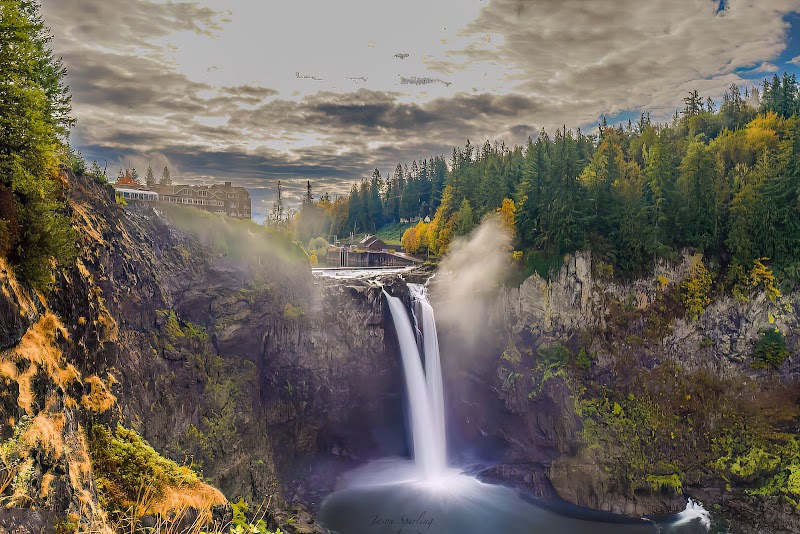
Top Scenic Backpacking Trails in Washington’s Alpine Lakes Wilderness
Experience the rugged beauty of Washington’s Alpine Lakes Wilderness—where mossy forests meet crystal-clear alpine lakes and steep ridges challenge every step. This guide highlights scenic backpacking trails, blending vivid landscapes with practical tips to prepare you for your next Pacific Northwest adventure.
Start Early to Avoid Afternoon Showers
Mountain weather shifts rapidly, with afternoon rain common in summer. Begin your hike before dawn to maximize dry trail time and safer footing.
Pack a Water Filter
Streams and lake sources abound but carry microorganisms. Filtering water in the backcountry ensures safe hydration without excess weight.
Wear Durable Hiking Boots
Expect rocky, uneven, and sometimes slippery terrain. Boots with strong ankle support and aggressive tread reduce injury risk and improve traction.
Respect Trail Etiquette and Wildlife
Maintain distance from wildlife and pack out all waste. Quiet voices and responsible camping preserve the wilderness experience for all.
Top Scenic Backpacking Trails in Washington’s Alpine Lakes Wilderness
The Alpine Lakes Wilderness in Washington State offers some of the Pacific Northwest's most compelling backpacking experiences, where crystalline lakes reflect jagged peaks that cast long shadows on dense evergreen forests. Whether you're aiming for a weekend escape or a multi-day trek, trails here challenge and reward equally, demanding respect for the alpine environment that’s fiercely unchanged.
Begin with the popular Snow Lake Trail, a 7.2-mile round trip featuring 1,800 feet of elevation gain. The path clambers through thick pine and fir, with moss-draped branches brushing shoulders as rivers dare you onward, culminating at the radiant blue Snow Lake. It’s a practical choice for day hikers looking to taste alpine terrain with manageable climbs.
For those ready to deepen the experience, the Necklace Valley loop stretches about 19 miles with roughly 3,500 feet of elevation change. This route navigates rugged ridges and serene lakes, where currents push forward around granite boulders and through wildflower-studded meadows. Along the way, campsites offer chances to witness early morning light washing the lakes in gold and to hear the distant call of mountain goats boldly patrolling steep escarpments.
If solitude is the goal, the Glacier Peak Wilderness to the northeast leads to more intricate paths within Alpine Lakes. The Rampart Lakes Trail, a 7.5-mile venture with over 2,000 feet of ascent, rewards with quiet alpine pools bordered by wild rhododendrons and the occasional glance of a hawk circling high above.
Planning for any of these treks requires solid preparation. Footwear should handle rocky, often uneven trails—boots with firm ankle support and good tread will serve best. Hydration is critical; the alpine air dries lungs quickly, and consistent water intake counters fatigue. Start early to avoid afternoon weather shifts common in this region. Bring lightweight layers as temperatures fluctuate drastically from shaded forests to exposed ridge lines.
Beyond physical demands, these trails engage you in a dialog with a landscape alive and insistent. Waterfalls roar, winds ruffle trees that have quietly witnessed centuries, and every step leaves a trace in soft earth that will soon be reclaimed by nature’s steady hand. Here, backpacking is a negotiation with an environment that remains fiercely itself—not conquered, but respected.
With clear routes and stunning vistas, the Alpine Lakes Wilderness invites adventurers to both test limits and savor moments of calm. Whether circling alpine lakes, climbing rugged passes, or camping under star-studded skies, this wild heart of Washington's Cascades offers a timeless challenge to those who seek its paths.
Nearby Trips
All Adventures
Boat Charters
Water Activities
Adventures near Snoqualmie, Washington
Discover the unique and memorable adventures that make Snoqualmie, Washington special.
Frequently Asked Questions
Are permits required for backpacking in Alpine Lakes Wilderness?
Yes, self-issued permits are required for all overnight trips to manage wilderness impact. They are available at trailheads at no cost and help maintain sustainable use.
What wildlife might I encounter on these trails?
Expect to spot marmots, mountain goats, black bears, and a variety of birds like gray jays and hawks. Keep a safe distance and store food properly to avoid attracting animals.
When is the snow usually cleared from main trails?
Snowpack varies yearly, but lower elevation paths often clear by mid-June; higher trails may remain snow-covered into July or August depending on snowfall.
What is the best trail for beginner backpackers?
Snow Lake Trail offers a moderate climb and a defined path with stunning scenery, making it ideal for newcomers seeking an introduction to alpine backpacking.
Are there reliable water sources along the Necklace Valley loop?
Yes, several lakes and streams provide water, but always treat or filter water before consumption to avoid parasites and bacteria.
Is bear spray recommended in this area?
Yes, carrying bear spray is advised as a safety precaution, especially during peak bear activity in warmer months.
Recommended Gear
Sturdy Hiking Boots
Supportive, waterproof boots protect feet on rocky and wet trails typical of alpine terrain.
Water Filtration System
To safely drink from lakes and streams without carrying excessive water weight.
Layered Clothing
Allows adjustment to temperature swings from forest shade to exposed ridges.
Insulated Jacket
Protects against chilling winds and cold alpine nights.
Local Insights
Hidden Gems
- "Colchuck Lake viewpoint – a less trafficked spot offering pristine reflections of Dragontail Peak."
- "Rampart Lakes Techtonic Ridge – a delightful overlook rarely crowded, perfect for quiet breaks."
Wildlife
- "mountain goats"
- "marmots"
- "black bears"
- "peregrine falcons"
History
"The wilderness area has deep roots with local Indigenous communities, who historically utilized the region's resources and trails for hunting and gathering."
